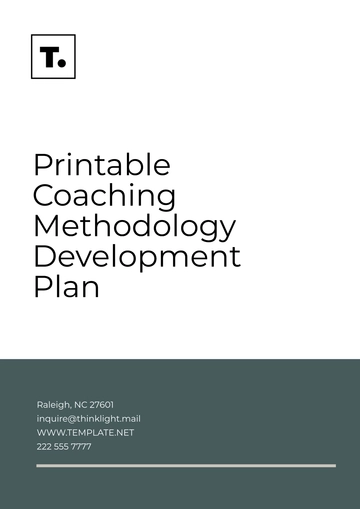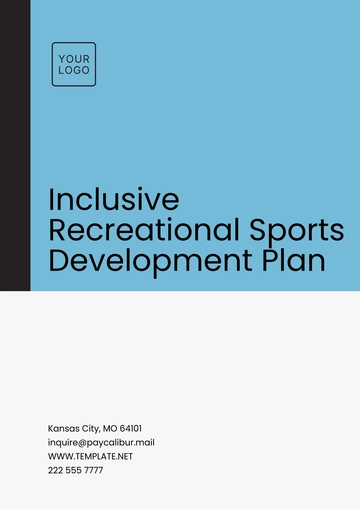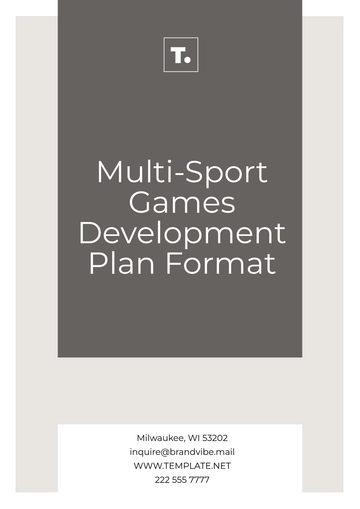Free Leadership Skills Development Plan Design

Introduction
Leadership is an essential trait that influences both personal and professional success. A well-structured Leadership Skills Development Plan provides individuals with the tools necessary to enhance their leadership abilities, improve team dynamics, and achieve organizational goals. The development of leadership skills requires a comprehensive approach that blends self-awareness, technical competence, interpersonal communication, and strategic thinking. This design outlines the framework for fostering leadership growth across various levels of experience and expertise.
Objective
The primary objective of this Leadership Skills Development Plan is to:
Identify key leadership competencies needed in current or future roles.
Create a roadmap for the acquisition and refinement of these competencies.
Provide methods for continuous feedback, reflection, and growth.
Align leadership development efforts with organizational goals.
Leadership Competencies
The following competencies are central to effective leadership:
Communication Skills: Mastering both verbal and non-verbal communication to foster collaboration, provide clarity, and engage teams.
Decision-Making and Problem-Solving: Demonstrating sound judgment in making decisions and resolving issues effectively.
Emotional Intelligence (EQ): The ability to manage one’s own emotions while recognizing and influencing the emotions of others.
Team Building and Motivation: Creating a positive team culture, empowering individuals, and driving performance.
Visionary Thinking and Strategic Planning: Developing and communicating a clear vision for the future while executing a plan to achieve long-term success.
Adaptability: Remaining flexible in the face of change, adjusting strategies as necessary, and learning from experiences.
Development Stages
1. Self-Assessment and Goal Setting
The first stage involves identifying current strengths and areas for growth. This is achieved through self-reflection, feedback from peers or mentors, and formal assessments such as leadership competency questionnaires. Setting clear and achievable goals allows individuals to track their progress over time.
Action Steps:
Conduct a leadership self-assessment.
Collect feedback from colleagues or supervisors.
Set short-term and long-term leadership development goals.
2. Skill Acquisition and Training
Once goals are identified, individuals can begin developing specific skills through various learning methods, such as workshops, seminars, online courses, and leadership coaching. This stage emphasizes building foundational skills in areas like communication, decision-making, and strategic thinking.
Action Steps:
Participate in relevant leadership training programs.
Engage in learning opportunities such as webinars, conferences, or online certifications.
Read books and articles by leadership experts to broaden your knowledge.
3. Practice and Application
Leadership skills can only be refined through practical application. In this phase, individuals will take on new challenges or leadership roles that allow them to implement the skills they are learning. This may include leading a project team, mentoring others, or taking on more responsibilities within the organization.
Action Steps:
Take on leadership roles within current projects or teams.
Volunteer to mentor less experienced colleagues.
Seek opportunities for cross-functional collaboration to enhance problem-solving skills.
4. Feedback and Reflection
Continuous improvement is vital to leadership development. Regular feedback from colleagues, mentors, or supervisors allows individuals to reflect on their performance and make necessary adjustments. Reflection should also be part of the process, where individuals assess their growth, challenges faced, and the effectiveness of their leadership.
Action Steps:
Schedule regular feedback sessions with supervisors and peers.
Keep a leadership journal to track personal progress and insights.
Reflect on leadership experiences to identify lessons learned.
5. Continuous Learning and Adaptation
Leadership development is an ongoing process. As individual grows in their leadership capacity, they should seek new opportunities to challenge themselves, learn from others, and adapt to changing environments.
Action Steps:
Continue seeking out leadership training and educational opportunities.
Join leadership-focused groups or networks for ongoing peer learning.
Stay informed about industry trends and leadership practices.
Evaluation and Success Metrics
To assess the success of the development plan, the following evaluation methods can be implemented:
Progress Reviews: Regularly scheduled check-ins to review goals, feedback, and improvements.
Performance Metrics: Observable improvements in leadership effectiveness, such as increased team productivity, satisfaction, or innovation.
360-Degree Feedback: A comprehensive feedback process involving colleagues at all levels to provide insights into leadership performance.
Self-Reflection Reports: Personal evaluations where individuals measure their leadership development journey and identify future growth areas.
Conclusion
A structured Leadership Skills Development Plan is a critical tool for enhancing the capabilities of leaders. By focusing on self-assessment, targeted skill development, practical application, and continuous learning, individuals can become more effective and confident leaders. The ultimate goal is to equip leaders with the tools they need to inspire and guide teams while contributing to the overall success of the organization. This plan should be customized to individual needs, taking into account personal career aspirations, organizational goals, and evolving leadership trends.
- 100% Customizable, free editor
- Access 1 Million+ Templates, photo’s & graphics
- Download or share as a template
- Click and replace photos, graphics, text, backgrounds
- Resize, crop, AI write & more
- Access advanced editor
The Leadership Skills Development Plan Design Template from Template.net is fully editable and customizable to help enhance your leadership abilities. Tailor the plan to focus on key leadership traits and growth areas. Editable in our AI Editor Tool, this template offers a flexible, personalized approach to developing strong, effective leadership skills for success.





























